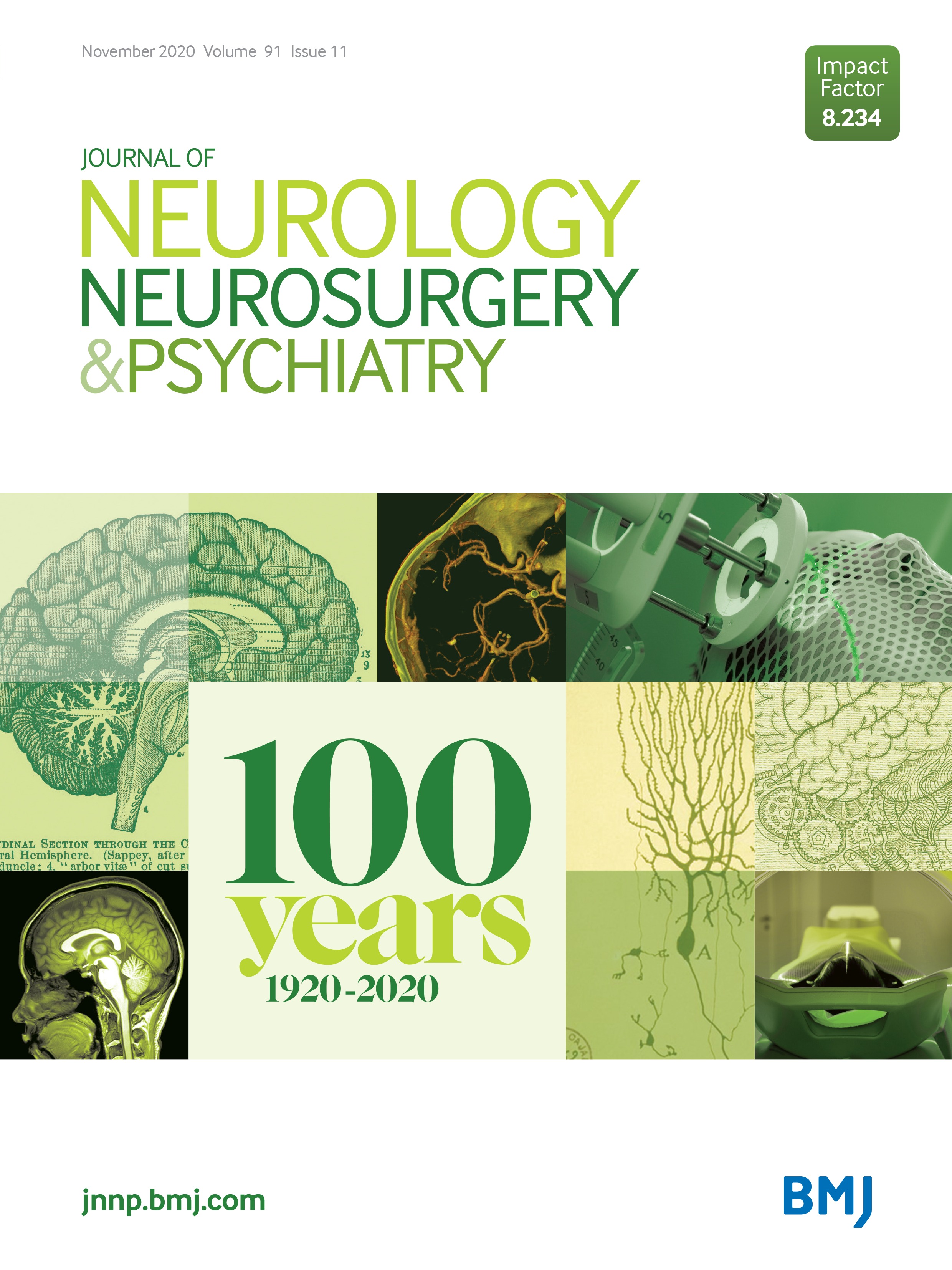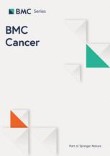|
Αρχειοθήκη ιστολογίου
-
►
2023
(391)
- ► Φεβρουαρίου (200)
- ► Ιανουαρίου (191)
-
►
2022
(2843)
- ► Δεκεμβρίου (161)
- ► Σεπτεμβρίου (219)
- ► Φεβρουαρίου (264)
- ► Ιανουαρίου (280)
-
►
2021
(5625)
- ► Δεκεμβρίου (231)
- ► Σεπτεμβρίου (345)
- ► Φεβρουαρίου (620)
-
▼
2020
(2065)
- ► Δεκεμβρίου (535)
-
▼
Νοεμβρίου
(733)
-
▼
Νοε 04
(33)
- Pharmacokinetics and Safety of Single and Multiple...
- Expanding the phenotype of MOG antibody-associated...
- Prevalence, predictors and prognosis of incidental...
- Associations of APOE e2 genotype with cerebrovascu...
- The future of neuroprotection in stroke
- Intraventricular neuroepithelial tumors: surgical ...
- High proportion of anergic B cells in the bone mar...
- Too much serotonin causes signs and symptoms that ...
- Serotonin Syndrome Associated With Vilazodone Over...
- Self-reported health without clinically measurable...
- ZMYND8 expression in breast cancer cells blocks T-...
- The microbiome and cancer: creating friendly neigh...
- Single-cell transcriptomic heterogeneity in invasi...
- Radiomic detection of EGFR mutations in NSCLC
- Ear Cartilage Reconstruction Combining Induced Plu...
- Facial Nerve Repair by Muscle-Vein Conduit in Rats...
- Glycosyltransferase ST6Gal-I promotes the epitheli...
- Human genetic variants disrupt RGS14 nuclear shutt...
- From pathogen to a commensal: modification of the ...
- De-Ritis Ratio Is Associated with Mortality after ...
- Cervical Cancer Screening Guidelines in the Postva...
- Skin Diseases among the Old Age Residents in a Nur...
- Effects of Yinzhihuang Granules on Serum Liver Enz...
- Palbociclib Plus Exemestane with GnRH Agonist vers...
- Effectiveness of Perindopril/Indapamide Single-Pil...
- Cinacalcet as a First-Line Treatment in Neonatal S...
- Assessment of D-Shaped Annulus of Mitral Valve in ...
- Anatomy of Mitral Valve Complex as Revealed by Non...
- The Mesenchymal Cap of the Atrial Septum and Atria...
- Muscularization of the Mesenchymal Outlet Septum d...
- Survey on Physicians’ Knowledge and Training Needs...
- Therapy Algorithms for the Diagnosis and Treatment...
- Multistage Latissimus Dorsi Flap with Implant for ...
-
▼
Νοε 04
(33)
- ► Σεπτεμβρίου (222)
- ► Φεβρουαρίου (28)
-
►
2019
(9608)
- ► Δεκεμβρίου (19)
- ► Σεπτεμβρίου (54)
- ► Φεβρουαρίου (3791)
- ► Ιανουαρίου (3737)
-
►
2018
(69720)
- ► Δεκεμβρίου (3507)
- ► Σεπτεμβρίου (3851)
- ► Φεβρουαρίου (8116)
- ► Ιανουαρίου (7758)
-
►
2017
(111579)
- ► Δεκεμβρίου (7718)
- ► Σεπτεμβρίου (7549)
- ► Φεβρουαρίου (10753)
- ► Ιανουαρίου (10529)
-
►
2016
(16402)
- ► Δεκεμβρίου (7478)
- ► Φεβρουαρίου (900)
- ► Ιανουαρίου (1250)
! # Ola via Alexandros G.Sfakianakis on Inoreader
Η λίστα ιστολογίων μου
Τετάρτη 4 Νοεμβρίου 2020
Pharmacokinetics and Safety of Single and Multiple Doses of Oral N -Acetylcysteine in Healthy Chinese and Caucasian Volunteers: An Open-Label, Phase I Clinical Study
Expanding the phenotype of MOG antibody-associated disease (MOGAD): half a century of epilepsy and relapsing optic neuritis
|
Prevalence, predictors and prognosis of incidental intracranial aneurysms in patients with suspected TIA and minor stroke: a population-based study and systematic review
|
Associations of APOE e2 genotype with cerebrovascular pathology
|
The future of neuroprotection in stroke
|
Intraventricular neuroepithelial tumors: surgical outcome, technical considerations and review of literature
|
High proportion of anergic B cells in the bone marrow defined phenotypically by CD21(−/low)/CD38- expression predicts poor survival in diffuse large B cell lymphoma
|
Too much serotonin causes signs and symptoms that can range from mild (shivering and diarrhea) to severe (muscle rigidity, fever and seizures).
|
Serotonin Syndrome Associated With Vilazodone Overdose in a 22-Month-Old Treated With Dexmedetomidine
|
Self-reported health without clinically measurable benefits among adult users of multivitamin and multimineral supplements: a cross-sectional study
|
ZMYND8 expression in breast cancer cells blocks T-lymphocyte surveillance to promote tumor growth
|
The microbiome and cancer: creating friendly neighborhoods and removing the foes within
|
Αρχειοθήκη ιστολογίου
-
►
2023
(391)
- ► Φεβρουαρίου (200)
- ► Ιανουαρίου (191)
-
►
2022
(2843)
- ► Δεκεμβρίου (161)
- ► Σεπτεμβρίου (219)
- ► Φεβρουαρίου (264)
- ► Ιανουαρίου (280)
-
►
2021
(5625)
- ► Δεκεμβρίου (231)
- ► Σεπτεμβρίου (345)
- ► Φεβρουαρίου (620)
-
▼
2020
(2065)
- ► Δεκεμβρίου (535)
-
▼
Νοεμβρίου
(733)
-
▼
Νοε 04
(33)
- Pharmacokinetics and Safety of Single and Multiple...
- Expanding the phenotype of MOG antibody-associated...
- Prevalence, predictors and prognosis of incidental...
- Associations of APOE e2 genotype with cerebrovascu...
- The future of neuroprotection in stroke
- Intraventricular neuroepithelial tumors: surgical ...
- High proportion of anergic B cells in the bone mar...
- Too much serotonin causes signs and symptoms that ...
- Serotonin Syndrome Associated With Vilazodone Over...
- Self-reported health without clinically measurable...
- ZMYND8 expression in breast cancer cells blocks T-...
- The microbiome and cancer: creating friendly neigh...
- Single-cell transcriptomic heterogeneity in invasi...
- Radiomic detection of EGFR mutations in NSCLC
- Ear Cartilage Reconstruction Combining Induced Plu...
- Facial Nerve Repair by Muscle-Vein Conduit in Rats...
- Glycosyltransferase ST6Gal-I promotes the epitheli...
- Human genetic variants disrupt RGS14 nuclear shutt...
- From pathogen to a commensal: modification of the ...
- De-Ritis Ratio Is Associated with Mortality after ...
- Cervical Cancer Screening Guidelines in the Postva...
- Skin Diseases among the Old Age Residents in a Nur...
- Effects of Yinzhihuang Granules on Serum Liver Enz...
- Palbociclib Plus Exemestane with GnRH Agonist vers...
- Effectiveness of Perindopril/Indapamide Single-Pil...
- Cinacalcet as a First-Line Treatment in Neonatal S...
- Assessment of D-Shaped Annulus of Mitral Valve in ...
- Anatomy of Mitral Valve Complex as Revealed by Non...
- The Mesenchymal Cap of the Atrial Septum and Atria...
- Muscularization of the Mesenchymal Outlet Septum d...
- Survey on Physicians’ Knowledge and Training Needs...
- Therapy Algorithms for the Diagnosis and Treatment...
- Multistage Latissimus Dorsi Flap with Implant for ...
-
▼
Νοε 04
(33)
- ► Σεπτεμβρίου (222)
- ► Φεβρουαρίου (28)
-
►
2019
(9608)
- ► Δεκεμβρίου (19)
- ► Σεπτεμβρίου (54)
- ► Φεβρουαρίου (3791)
- ► Ιανουαρίου (3737)
-
►
2018
(69720)
- ► Δεκεμβρίου (3507)
- ► Σεπτεμβρίου (3851)
- ► Φεβρουαρίου (8116)
- ► Ιανουαρίου (7758)
-
►
2017
(111579)
- ► Δεκεμβρίου (7718)
- ► Σεπτεμβρίου (7549)
- ► Φεβρουαρίου (10753)
- ► Ιανουαρίου (10529)
-
►
2016
(16402)
- ► Δεκεμβρίου (7478)
- ► Φεβρουαρίου (900)
- ► Ιανουαρίου (1250)






